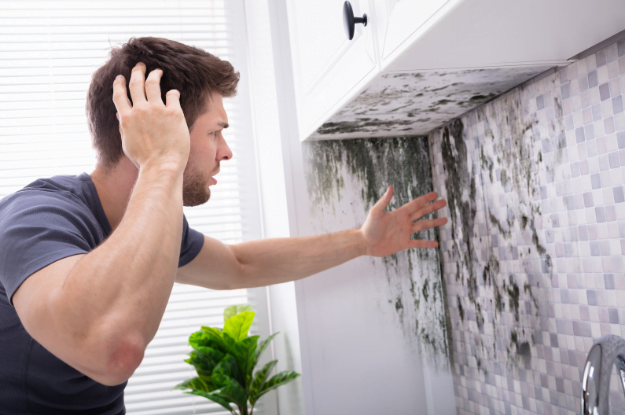Mold grows in warm and damp places. Since the bathroom and kitchen are a home’s most frequently used rooms, mold often grows here. Mold has numerous types and colors, causing severe health risks such as respiratory and allergic issues. The most notorious mold is black mold, known to be highly toxic. Whichever type of mold you are dealing with, you must treat the issue with the seriousness it deserves. If the mold has spread too much, Sarkinen Plumbing is a top-rated plumbing company that can help you deal with the issue.
But if the mold in your kitchen or bathroom is still at a level you can handle, here are some of the best ways to remove it.
How to Remove Mold
Bathroom mold seems self-explanatory as the bathroom has a lot of moisture. When you keep windows closed, and the house warm, ventilating the house is challenging in winter. By spring, mold can have developed in the kitchen due to the warmth and moisture.
The hotspots for mold in bathrooms include the shower, bathtub, and grout. In the kitchen, the mold grows in wet areas like the sink, behind appliances like dishwashers and washing machines, and underneath the sink. You can get rid of mold using natural or store-bought solutions. The best and most effective way is going natural, of which you have several options. Find out the comparison of Front Load Vs. Top Load Washers
Ammonia
Ammonia is very effective at mold elimination. Ammonia is alkaline and has pH levels between 22 and 13, higher than molds can tolerate. Mold thrives in pH levels below 7. Dilute a solution of ammonia to the water of 1:1. Using a spray bottle, spray on the mold and let sit for three to four hours, then clean and let dry.
Vinegar
Vinegar is an effective solution for removing mold; its mild acidity eliminates 82% of mold species. Cleaning vinegar contains acetic acid (6%) and is the best for mold removal. White vinegar consists of 5% acetic acid, works just as well and is widely available.
Mix white vinegar with water in a 2:1 ratio. Put the solution into a spray bottle and spray on the moldy areas. Let it sit between thirty minutes and an hour before scrubbing and wiping clean. Vinegar has a pungent smell, but it will disappear after a while. Vinegar kills mold on porous and non-porous surfaces, making it perfect for cleaning bathrooms and kitchens.
Hydrogen Peroxide
You probably know hydrogen peroxide for its use in wound disinfecting. However, hydrogen peroxide kills numerous microorganisms. It releases oxygen at a high rate. This release kills the mold via surface oxidation, breaking down its DNA and proteins. Use a spray bottle to apply hydrogen peroxide to the mold-infested surface. Let the mixture sit until the bubbling stops, around ten minutes. Scrub the surface and wipe it clean.
Sodium Bicarbonate
Sodium bicarbonate or baking soda also cleans mold effectively. Its pH ranges between 8 and 9, higher than the pH of 7 that mold thrives in. Make a paste of the ratio 1:1 with baking soda and water. Apply to the affected area and scrub. Mix a tablespoon of sodium bicarbonate in a cup of water. Use a spray bottle to spray onto the surface. Leave the mixture to dry.

How to Prevent Mold in Your Bathroom and Kitchen
You can prevent mold from growing back by doing several things:
Lower the Humidity Levels
Lower the humidity levels and ensure they do not go beyond 50%. Use a dehumidifier or your air con to achieve these levels. Buy a meter that will help you keep track of the humidity levels in your home.
Ventilate
Ventilate your kitchen with a range hood and use it when cooking to remove the humidity. If the weather allows it, open your windows when cooking.
Use Mold Inhibitors
Before you paint your home, add mold inhibitors. These inhibitors are available in any home improvement store.
Insulate
Insulate your home correctly and ensure you weatherproof the windows. Check that your plumbing operates appropriately and has no leaks.
Wash Bathroom Mats and Shower Curtains
Wash your bathroom mats and dry them. Wash your shower curtains regularly, as mold tends to grow on them when they are constantly wet.
Bathrooms and kitchens are the worst hit when it comes to mold. The two rooms provide mold with the perfect environment to thrive. Mold is dangerous and leads to allergic reactions and respiratory issues. To remove mold, use natural methods, which are safe, cost-effective, and reliable.




